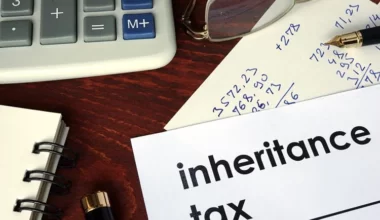A leasehold is a type of land tenure or property tenure in which one party purchases the right to occupy land or a building for a set period of time. Leasehold estate can be bought and sold on the open market because a lease is a legal estate. A leasehold differs from a freehold or fee simple in which ownership of a property is purchased outright; then held for an indefinite period of time, as well as a tenancy in which a property is let (rent); on a regular basis, such as weekly or monthly.
What is a Leasehold Estate
A leasehold estate is a tenant’s exclusive right to occupy a property for a set period of time. Usually, a written lease agreement is concluded between the owner, who is the lessor, and the tenant, the lessee. This agreement specifies the conditions under which the property may be occupied; as well as what the lessor may or may not do. This contract is legally binding.
When you rent property, you usually sign a lease agreement with the landlord or owner. This is referred to as a leasehold estate. A non-freehold estate is another term for a leasehold estate. Although a leasehold estate agreement can be concluded verbally, especially for a period of less than a year; it is best practice to sign a written leasehold estate agreement that explicitly specifies the lease terms.
Related Articles: HOW LONG DOES IT TAKE TO GET CAR INSURANCE
Both the lessee and the lessor have a clear understanding of their rights by entering into a written contract. Furthermore, the agreement protects both parties. The leasehold principle states that the lessee’s possession of the property has a time limit. Furthermore, only the lessee has permission to make changes to the property in accordance with the terms of the lease.
Important Takeaways:
- A leasehold is an accounting term for an asset or property that a lessee (tenant) contracts to rent from a lessor (property owner); for an agreed-upon period of time in exchange for scheduled payments.
- Rather than constructing their own buildings, retail store owners frequently use leasehold arrangements for their businesses.
- Commercial leasehold contracts can be complex agreements that include payment structures, breach of contract clauses, and leasehold improvement clauses.
- The contract will specify which party is responsible for making leasehold improvements, such as erecting walls and partitions, installing lighting fixtures, or erecting shelves.
- The IRS does not permit the deduction of leasehold improvements. The improvements, however, are subject to depreciation.
Understanding A Leasehold Estate
The terms of the agreement between the lessee (tenant) and the lessor will be specified in a leasehold contract (property owner or landlord). Contracts for commercial properties, such as office space, are typically complex agreements that specify landlord and tenant responsibilities, security deposits, breach of contract clauses, and leasehold improvement clauses. Larger tenants may be able to negotiate better terms in exchange for leasing more space for a longer period of time. Commercial leases typically range from one to ten years.
Leasehold Estate Types
A leasehold agreement creates a situation in which the lessee has a temporary right of ownership over a property. In effect, the lessee has sole possession and use of the leased property. Lease agreements can have a variety of terms. Some can last for years, while others only last a few weeks. The following are the basic types of leases that you should be aware of.
Related Articles: Florida One Insurance: Home and Auto Insurance Reviews in Hialeah, Fl
#1. Tenancy for Years
This type of leasehold estate arrangement has a set term and typically lasts several years. In a tenancy for years, the lease is set for the long term, but there are specific starting and ending dates. The agreement can be terminated prematurely if there is a breach of the lease contract. Because this type of leasehold can last for many years, you must have a written agreement with the lessor or property owner. A written contract is essential for complying with the provisions of the Statute of Frauds.
#2. Periodic Tenancy
The lease term in this type of agreement can be from year to year or month to month. There are even arrangements that are only for a week at a time. Usually, the amount of the lease payment given by the lessee will be the basis of determining the term of the periodic tenancy. The landlord or lessor can end the lease agreement at any time, once the tenant has been given prior notice. For a year-to-year contract, the termination notice must give at least six months before the actual termination of the leasehold agreement.
The lease term in a long-term tenancy is several years. A periodic tenancy, on the other hand, will typically have a shorter lease period. A tenancy for years, on the other hand, can be changed automatically into a periodic tenancy if the long-term lease agreement is not specified in a written contract.
#3. Tenancy at Sufferance
The term of the lease in a tenancy of sufferance ends only when the landlord or property owner asks the tenant to leave. A tenancy at sufferance, like other types of leases, has a set period or term. However, in this type of lease agreement, the tenant can continue to occupy the property even after the leasehold term has expired. As a result, the tenant will continue to pay the lease until the landlord terminates the tenancy.
#4. Tenancy at Will
Both the landlord and the lessee have the right to terminate the lease under a tenancy at will. The lease termination is valid if prior notice is given and a reasonable time is allowed by the party who initiated the lease termination. When there is no written contract, this type of lease is common. Most of the time, either the lessee or the landlord will exercise the right to terminate only if there is a cause. In some cases, a tenancy at will termination can be automatically by the operation of law.
Leasehold Improvements to the Lease Agreement
After a lease agreement is signed, the lessee, or tenant, begins to build out the space to the extent permitted by the contract. Work on walls, ceilings, floor space, lighting fixtures, additional plumbing fixtures, shelving, and cabinets represent leasehold improvements that are recorded as fixed assets on a company’s balance sheet.
Related Articles: Best Loyalty Insurance Reviews | Tips for Enhancing Customer Loyalty
Depending on the contract, leasehold improvements might pay for by the tenant, the landlord, or a combination of both. In order to entice a new tenant to sign a lease, some landlords may agree to pay for leasehold improvements. However, if a building or office space is in high demand, the landlord may be unwilling to incur the additional expense for leasehold improvements.
Leasehold Estate Example
Leaseholds are most common for brick-and-mortar retailers. Best Buy Co., Inc. is an example. The majority of the company’s buildings are leased, and leasehold improvements are made to fit its standardized interior functional and aesthetic design. The majority of the company’s leases include renewal and escalation clauses, as well as contingent rents based on specified percentages of revenue, which is a common clause in retail lease agreements.
Rent expense is recorded straight-line until the end of the initial lease term, and any difference between straight-line expense amounts and rent payable is recorded as deferred rent. Leasehold improvements account for a sizable portion of gross property and equipment expenses for some retailers.
Leasehold Interest
A leasehold interest is a contract in which an individual or entity, known as a lessee in real estate terms, leases a parcel of land from an owner or lessor for a specified period of time. For the specified period of time, the lessee has the exclusive right to possess and use it as an asset or property. As previously stated, there are four types of leasehold interests: tenancy for years, periodic tenancy, tenancy at sufferance, and tenancy at will.
Related Articles: Settlor of Trust: Definition, Roles and General Overview
A leasehold interest is most commonly associated with a ground lease and, as a result, typically lasts for several years. For example, a person may lease a lot from an owner for 40 years and then decide to build a house on the grounds. That person could then rent out the property and earn rental income, but he or she would still be required to pay the owner for the right to use the lot.
What Is the Distinction Between a Leasehold and a Freehold Estate?
A freehold estate is also a type of real estate, but it differs from a leasehold estate. The main distinction here is that a freehold estate grants exclusive rights for an indefinite period of time. There is a specific end/beginning to consider depending on the type of leasehold estate.
Conclusion
A leasehold estate is any property, building, or unit within a building that can be leased. The type of leasehold estate you require is determined by your objectives.
It’s critical to comprehend what a leasehold agreement is and how it affects the property you buy or sell. In general, real estate can be either residential or commercial. Now that you have a better understanding of the term, you can buy/sell real estate with more confidence.
Frequently Asked Questions
What happens to leasehold property when lease expires UK?
If your leasehold expires, the property will revert ‘back’ to being a freehold rather than a leasehold. As a result, the freeholder will regain ownership of the land and building. For example, suppose you had sixty years left on your property’s lease in 2019.
Can you be evicted from a leasehold property?
If a leaseholder violates a lease condition (or covenant), the freeholder may take the leaseholder to court to evict the leaseholder and terminate the lease. This is referred to as forfeiture.
Is it hard to sell a leasehold property?
Selling a leasehold property is more difficult than selling a freehold property. However, in most cases, you will only need to gather additional paperwork and plan ahead of time. Selling a leasehold property can be a simple process if you prepare properly.
Who is responsible for the roof in a leasehold flat?
Repairs are the responsibility of the freeholder.
If you live in a flat, the freeholder is usually in charge of repairs to the structure of the building, including the roof and cladding. Lifts and communal stairways are examples of shared components.
Can you extend a leasehold property?
You can request a lease extension from your landlord at any time. If you qualify, you may be able to extend your lease by 90 years on a flat. If you qualify, you can get a mortgage for 50 years.
Related Articles
- Tenancy at Sufferance: What it is, examples
- LANDLORD ATTORNEY: Tips for Hiring a Landlord-Tenant Lawyer
- BUILDING CONTRACTOR: Job Description, Roles, and Salaries (Updated!)
- Estate Planning Lawyers: Top Rated Lawyers in Chicago, Brooklyn
- Trust and Estate Attorney: Top Rated Attorneys in San Diego, NYC
- Easy Own Homes: Rent to Own Homes in Illinois, Missouri






